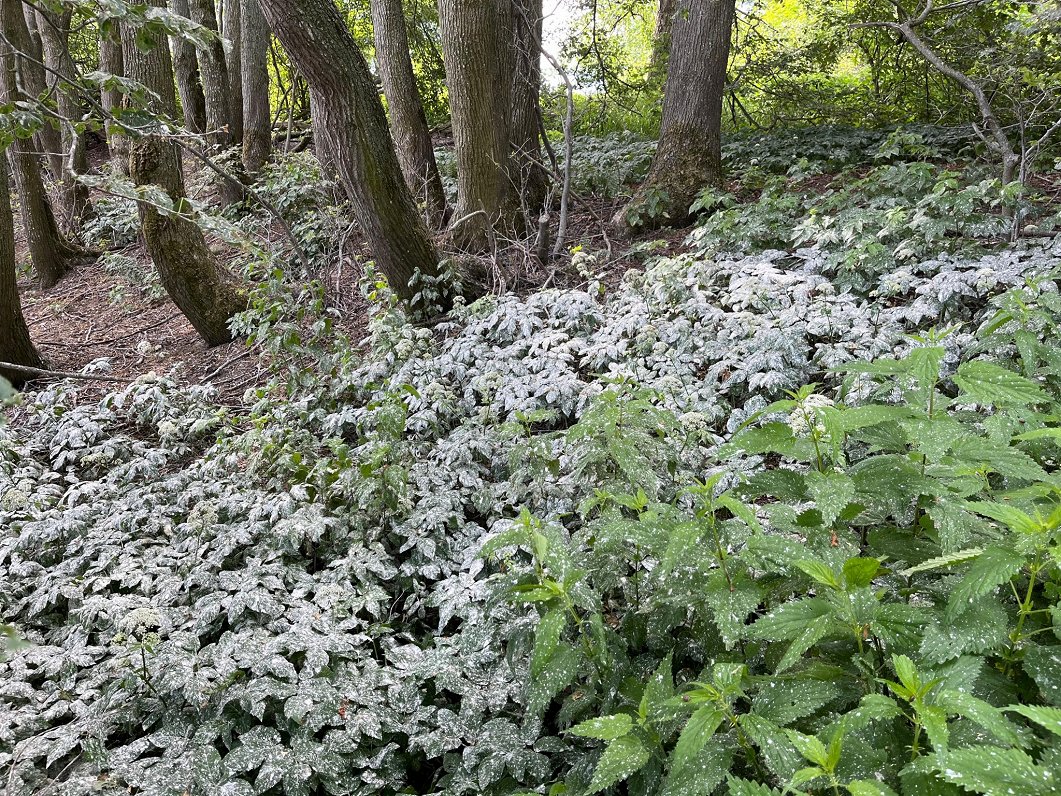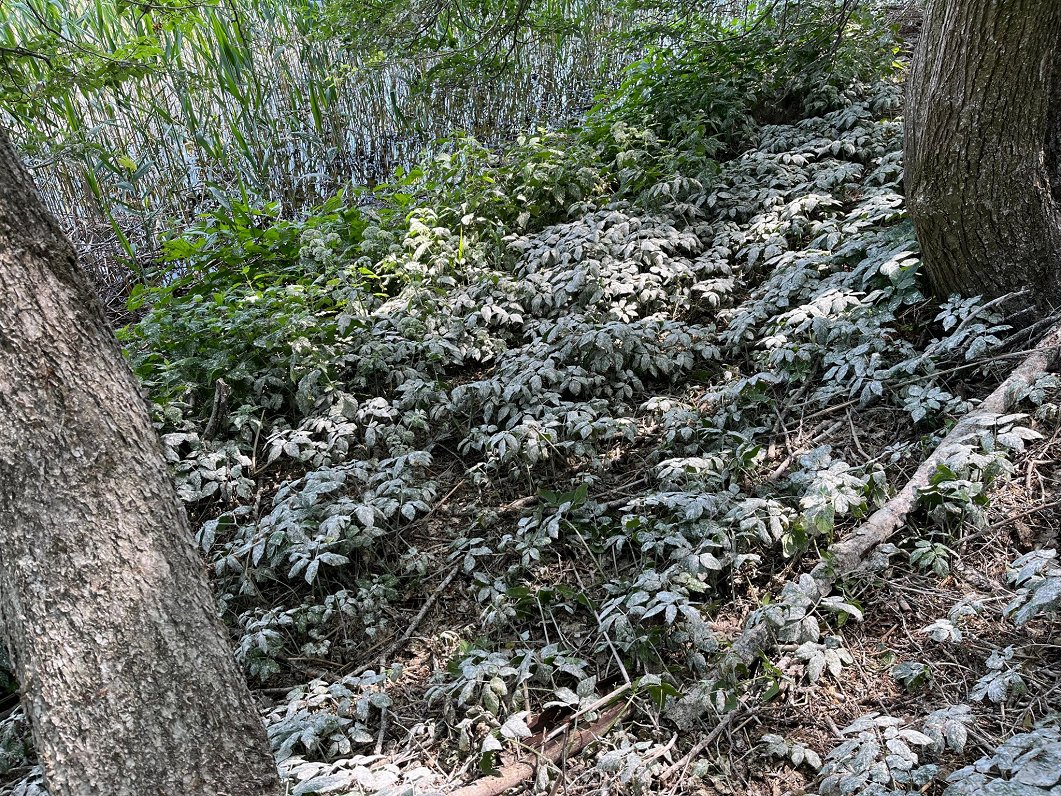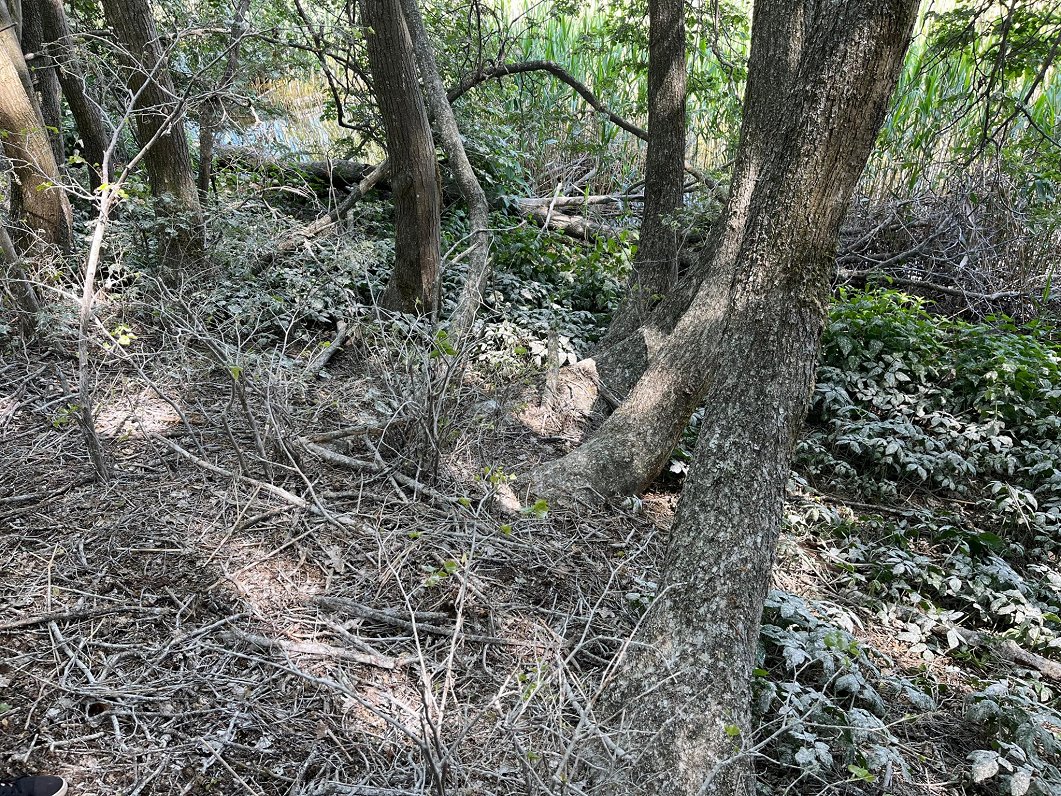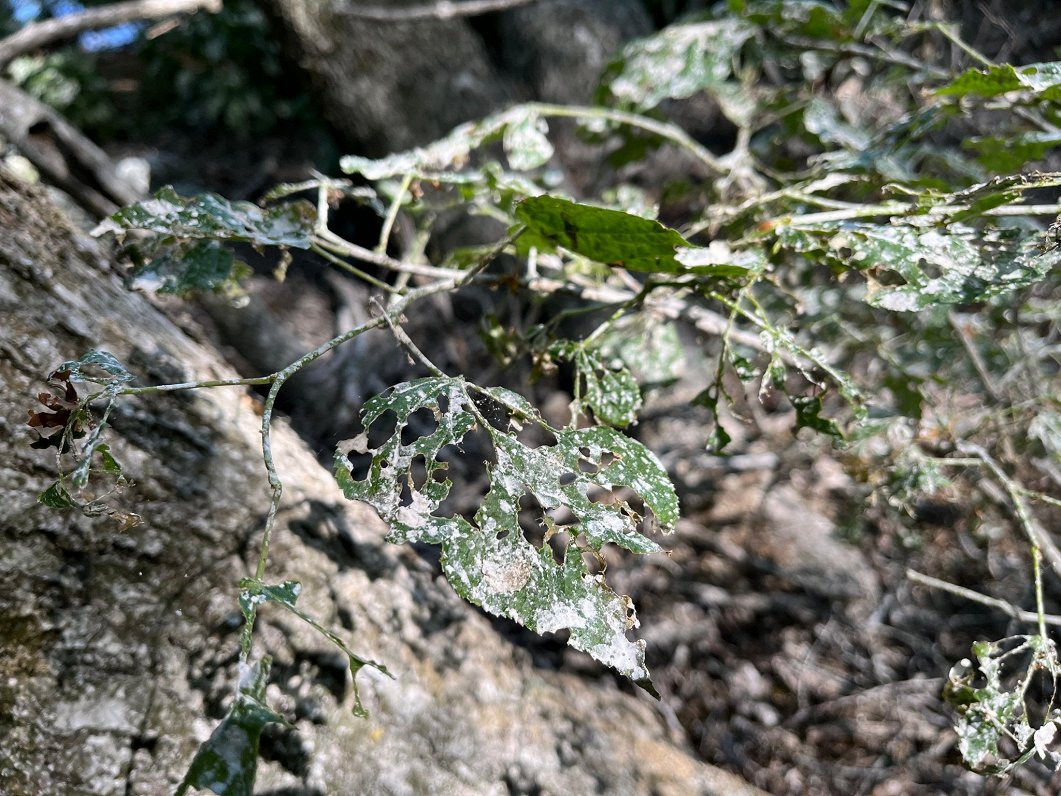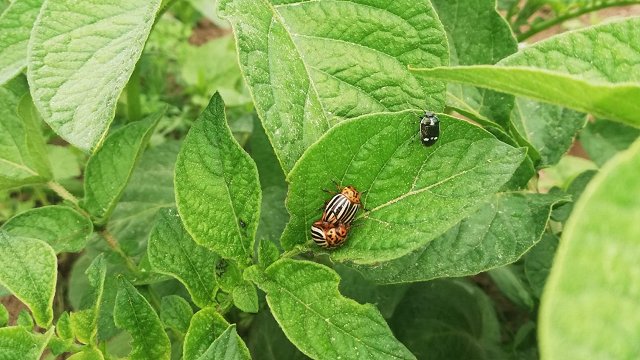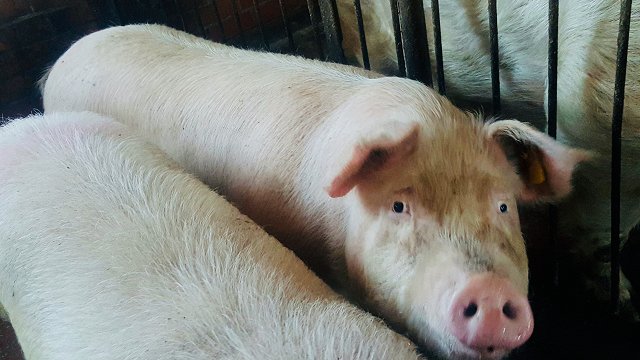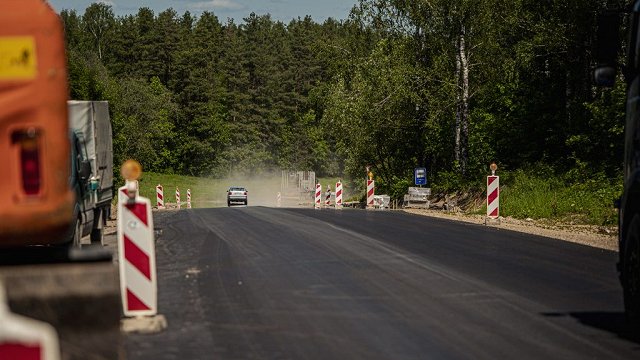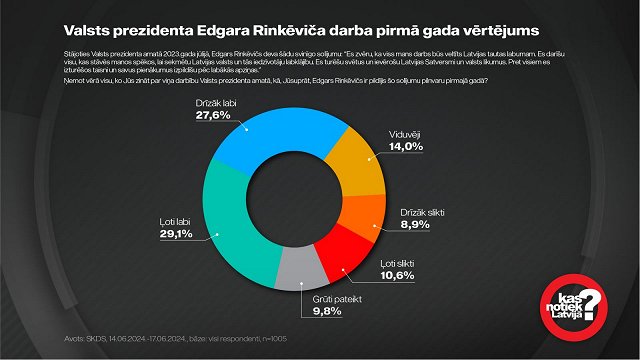These birds were relatively rare in Latvia until the late 1970s, but their numbers have increased rapidly in recent decades, causing damage to nature's biodiversity.
"Cormorants are very polluting and their droppings are very toxic - not only to trees, but also to everything around their nesting areas. You could have filmed a horror movie here with the insane smell, the fish bones, their carcasses," said Anda Zeize, Director of the Latgale Regional Administration of the DAP.
All the branches of the trees are white and there is not a single plant on the ground, said Dainis Tučs, Senior Nature Conservation Specialist at the DAP.
Cormorants are large colonial waterbirds. Their bodies can exceed one meter. On average, it can eat more than two kilograms of fish a day, making cormorants a serious competitor for fishermen.
"One bird eats about 60 kilograms a month. One hundred cormorants - six tonnes a month. We put 80,000 zander in the water every year, but that's a drop in the ocean for a lake this size. If all this is eaten by cormorants, then there is no result," said Igors Šabanovs, a representative of the association "Lake Rāzna for Man and Nature".
Cormorants are listed as non-hunted birds. Hunting them requires a special permit, which is issued if a special nature value is affected and economic losses are caused. This permit allows hunting from mid-August onwards. Nature experts believe that a pre-season hunting license would also be required in special exception areas. There are more than 300 cormorants in Lake Rāzna, but only 100 can be hunted.
"They are very tricky birds to hunt and very difficult to get to. They are in flocks. If you scare them off once, they will never fly to that place again," Šabanovs pointed out.
The problem with cormorants is also observed in other parts of Latvia. It is considered a European problem, as their numbers have risen to almost two million in Europe after a long period of conservation.
